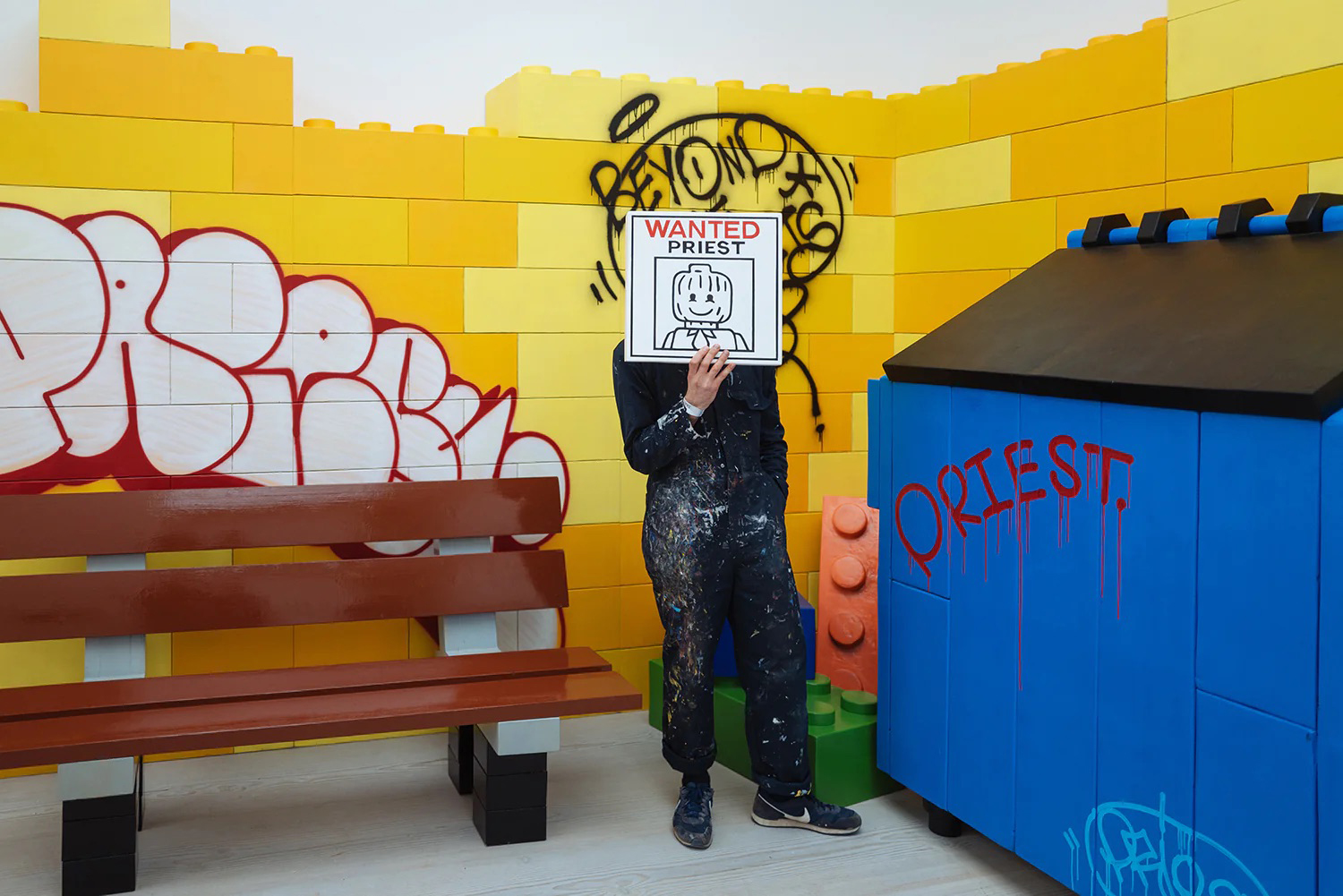From the back blocks where street corners become canvases, graffiti and religion dance a tango of uncanny resemblance. Is it mere adherence to codes, or shall we dare to whisper of unwritten commandments? Those who manoeuvre the spray cans and inky brushes, the street taggers and painters, live by a cardinal rule of graffiti culture: “Thou shalt not toy.” A term, subtly derogatory, also serves as an essential practice, separating the experienced artists from the fledglings. It emerges like a psalm from the biblical book itself, enabling artists to carve their niche and ascend the hierarchy of the graffiti community.
From the shores of New Zealand, contemporary artist PRIEST brings a different form of sacrament to the stylistic realm of pop art and graffiti. Yet, there’s a twist in his sermon of expression. He embraces the harsh theology of graffiti and informs his creative philosophy with “Toys!”. These aren’t mere child’s play. They’re central and pivotal, both as a nod to the derogatory graffiti term and signify the playful essence at the heart of his practice.

Image courtesy of the artist and Ian Reid
Photo credit: Ian Reid
My work mirrors my personality, sense of humour, interests and challenges. I am fascinated by playful and colourful work; it’s easy to pull people into an idea without shocking them too much
PRIEST
PRIEST’s work is an animated feast with biting satire. Seamlessly melding elements from nostalgic cartoons, video games, and street art, emulating the classic brushwork of vintage animation, he constructs a narrative critiquing the mechanical heartbeats of capitalism and corporate life.
Yet, the underlying essence is a reflection of self, a manifestation of his humour, interests, and the trials and misadventures of his artistry—a translation of experience into the diverse universe of popular culture.
In the eclectic world of street art, where the whispers of spray cans create legends, PRIEST’s work stands respectfully, exhibited alongside titans like Banksy, Obey, and Kenny Scharf in notable group shows; his artistry resonates with echoes of both rebellion and respect. He finds inspiration in the likes of Rone, KAWS, Joan Cornella, Javier Calleja, and Nathan Fielder.
Collectors of his works are spread far and wide, spanning from the KAWS collection in New York to private Oxford collections of former London Museum curators. From Tokyo’s bustling streets to Milan’s fashionable alleys, and from Montreal’s eclectic corners to Melbourne’s art-filled lanes, connoisseurs seek his original works. Such is the hunger for his satirical baptised pieces that there’s a waiting period of 8 to 12 months.
We managed to speak with the righteous artist before his upcoming exhibition, “Trapped in a Cel!” at Mucciaccia Gallery Mayfair on 12th October 2023.
Hi PRIEST. Thank you for taking the time to speak with us. Let’s start at the beginning. Please share a bit about your journey as an artist. When did your passion for art ignite, and were there pivotal moments or mentors that notably influenced your direction?
PRIEST: I was born in a small country town in New Zealand; my Mother was a dancer, and my father was a street performer. My family owned a small shop in which we sold outdoor wind sculptures. I was surrounded by many forms of art and performance from a young age. I started painting graffiti illegally on the streets in New Zealand in 2010. I moved cities a lot, from Wellington, I then moved to Melbourne, then to Copenhagen, Followed by Glasgow and now London.
I began making art in 2019. Following a court case for graffiti in Australia, I decided to make paintings and prints to help pay the fines. During this year, I assisted an artist in Melbourne called RONE. He taught me everything from managing my own career as an artist to building large-scale exhibitions from scratch. A few years later, I was lucky enough to have the New York-based artist KAWS mentor me and help guide my career into the fine art world; this was a pivotal point and brought a lot of attention to the paintings I currently was making.
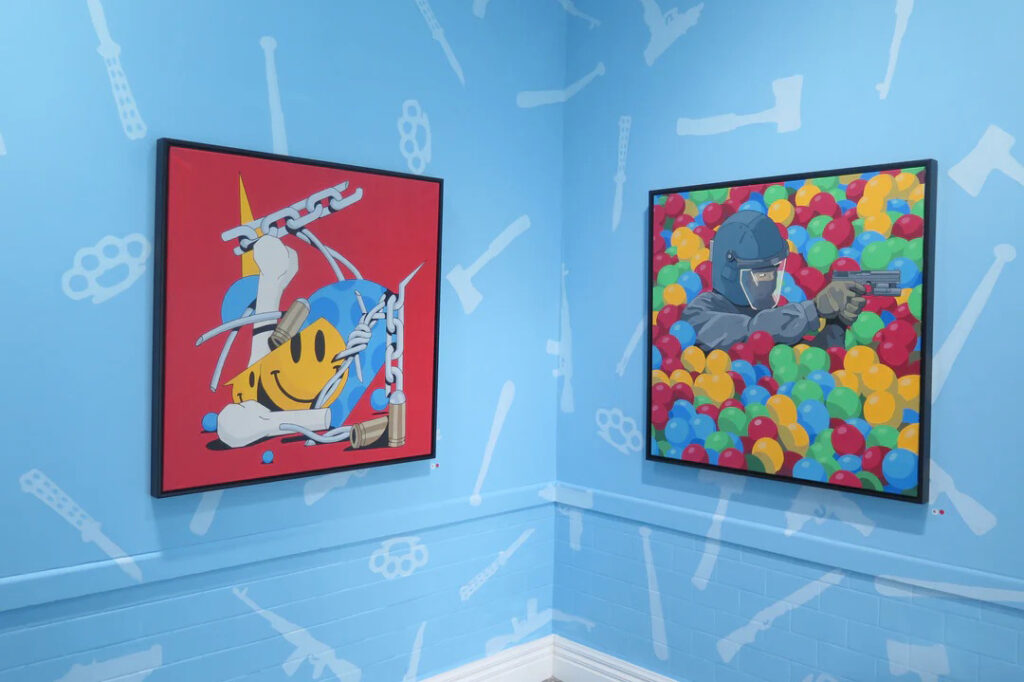
STOCKROOM GALLERY, MELBOURNE
Image courtesy of the artist
From your past, I’m particularly curious about your early graffiti days in New Zealand. Is there a memory from that time that remains vivid? What made it so impactful?
PRIEST: It was a messy time, physically and mentally. There are many; today, this one jumps to mind. I vividly remember dangling off a building four stories up in the pouring rain – a friend grasping one of my hands while I spray painted with the other. We were above the main strip in the city, and the tag stayed there for years and years. I saw it weekly. I often felt invincible, and after a night in the bars, I was fairly sure I could fly.
Your artist name, ‘PRIEST’, piques interest. What’s the story behind choosing this moniker, and what does it signify for you?
PRIEST: For starters, I’m not religious. My family was the furthest from it you could be. As I grew older, I found the concept of religion fascinating and noticed many similarities to the graffiti world and its codes. There is a common saying in graffiti, ”Thou shalt not be toy,” which has roots in religion. All of this aside, the letters are what I liked most, the order of them and the way that they could be connected together. I am a graffiti writer; writing letters is what I do; you always need to like what you write.
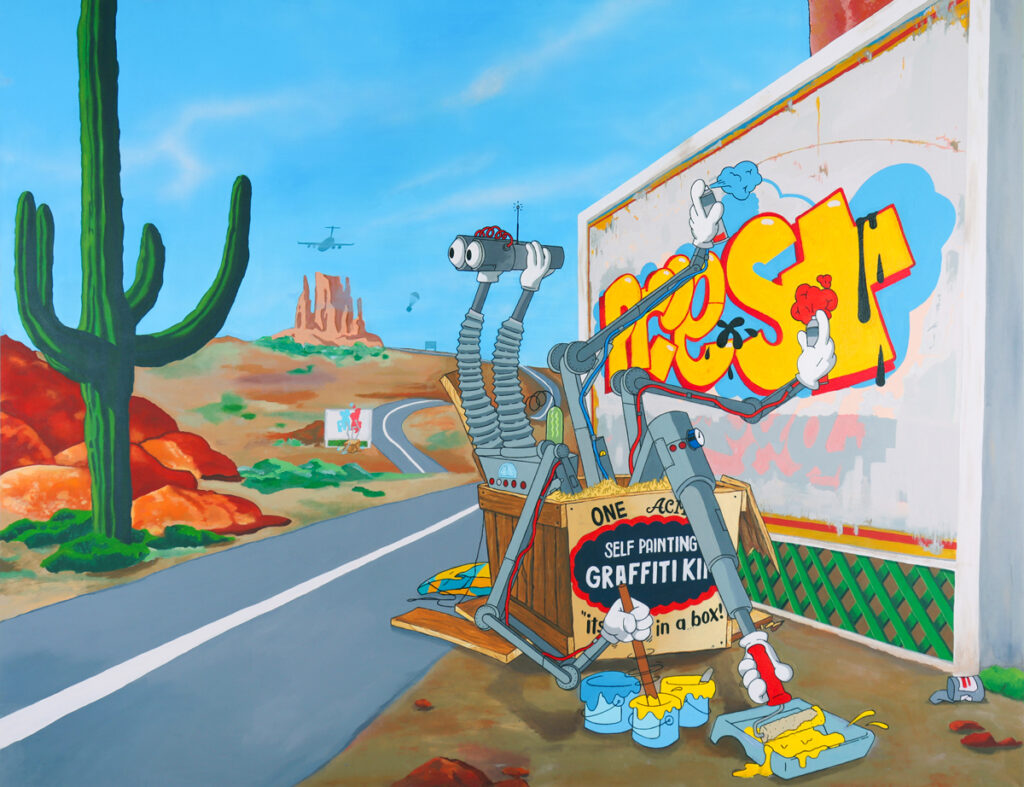
Image courtesy of the artist
Diving deeper into your work, it’s evident that your art offers a clever critique of capitalism and corporate culture, especially with the way you pair playful imagery and darker themes. Could you provide insights into your practice, inspirations, and the dominant themes you explore?
PRIEST: My work mirrors my personality, sense of humour, interests and challenges. I am fascinated by playful and colourful work; it’s easy to pull people into an idea without shocking them too much at the start. I frequently study the art styles of different areas of pop culture. I enjoy the challenges of mimicking the painterly style of old Disney backgrounds and applying them to modern-day objects, creating 3D renders of Pixar scenes and practicing the pixel styles of classic video games. Graffiti plays a large part in my work currently; the many situations that I have ended up in whilst painting graffiti, I like to recreate in my paintings and see how they translate to the various pop culture worlds I explore.
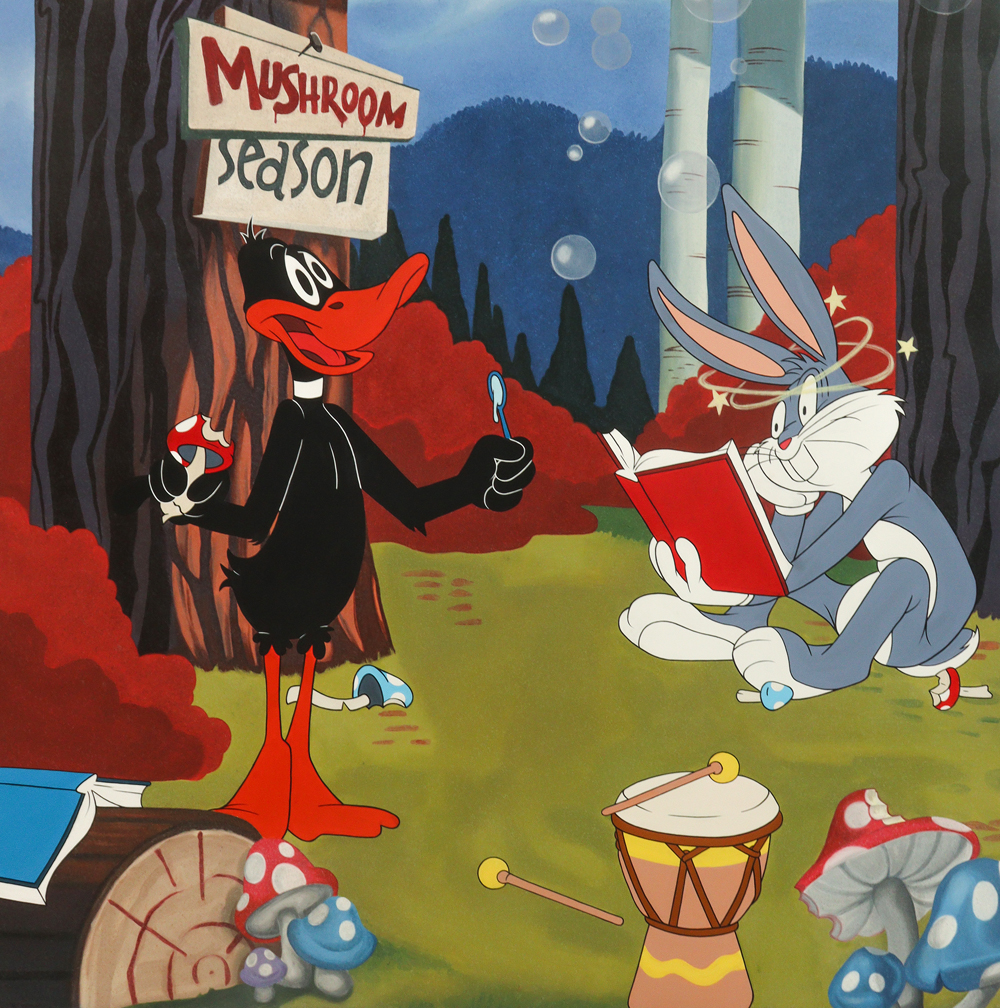
Image courtesy of the artist
I find your description of your projects as “bad ideas taken further” quite intriguing. Can you elaborate on what you mean by that?
PRIEST: One time, I had an Idea that if I dressed up like a trash bag, I could go painting graffiti in the street, and whenever the police drove by, I could crouch down, lean against a wall and blend in with the other trash. This idea quickly became a real product called ”TRASH SACK CAMOUFLAGE”. I made 30 of them.
For the release, I created an advert and wrote a jingle that I hired a band to play. The product came with a 16-page instruction manual that I wrote to explain the incredibly difficult process of putting on the trash bag and the many warnings of suffocation and other hazards. I hope this explains what I mean by ”bad ideas taken further”
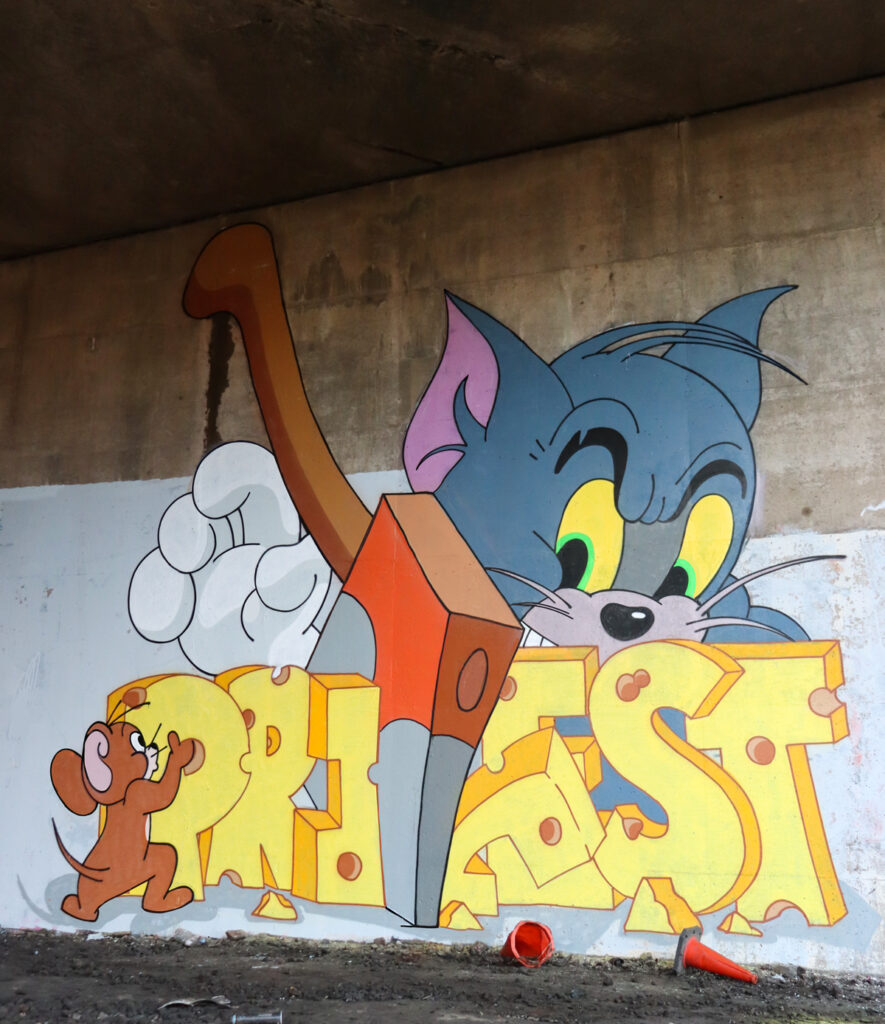
Image courtesy of the artist
Shifting gears a bit, you had legal troubles related to illegal graffiti in Australia. This seemed to have ushered you toward paintings and prints. How did transitioning from street graffiti to more “traditional” art forms influence your artistic perspective or methods?
PRIEST: There are huge differences between the two; I can paint a very large piece of graffiti in around ten minutes, whereas my canvas paintings can take 3 to 4 weeks to complete. This patience is something I still struggle with. Also, the adrenaline of climbing a ten-story building to paint then running from police down an alleyway is not quite the same as listening to a podcast, drinking tea and painting a picture of scooby-doo. I was never a trained classical painter, so my methods of painting are far from correct. I think this can make the work more interesting upon closer inspection.
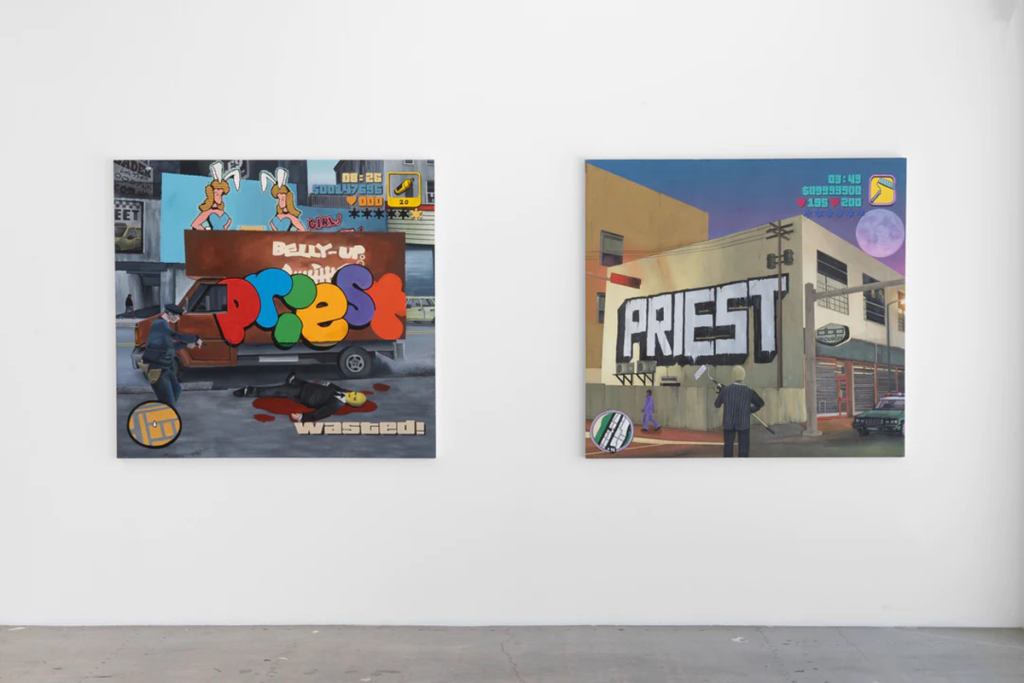
Image courtesy of the artist
Reflecting on your evolution from a graffiti artist to a recognised contemporary pop artist, how would you characterise the trajectory of your career?
PRIEST: I took graffiti seriously. I take art seriously. The main difference is that art is easier to digest for larger audiences, things can snowball much faster than expected, and I am learning every day how to manage this. I feel like I am speed-running my art career right now, whether that is a good thing or not.
Every artist has their sanctuary — the studio. Out of curiosity, which three items would you say are indispensable in your workspace?
PRIEST: Laptop, post-it notes, paint.
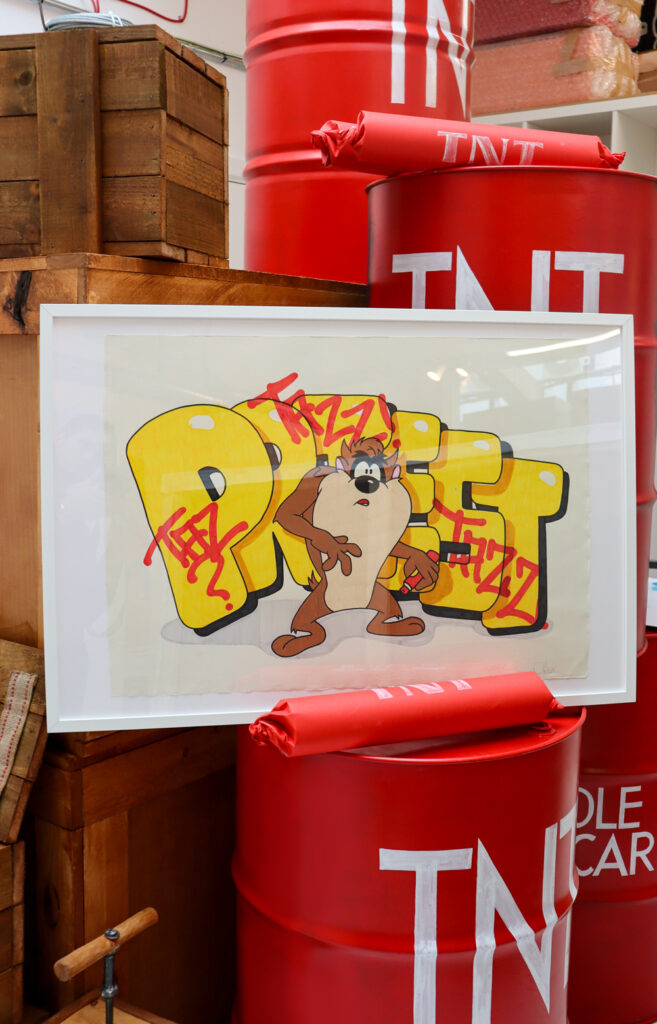
Looking forward, what lies on the horizon for PRIEST? Are there themes or subjects you haven’t delved into but are itching to?
PRIEST: I have quite a few international exhibitions lined up for next year which is always interesting to see how the work translates in new cities I have not exhibited in yet.
Subject-wise, the challenges of recreating my own Pixar-style paintings is very difficult; this art style interests me. I am also leaning into installation and sculpture more after the popularity of the Saatchi installation for Beyond the Streets earlier this year.
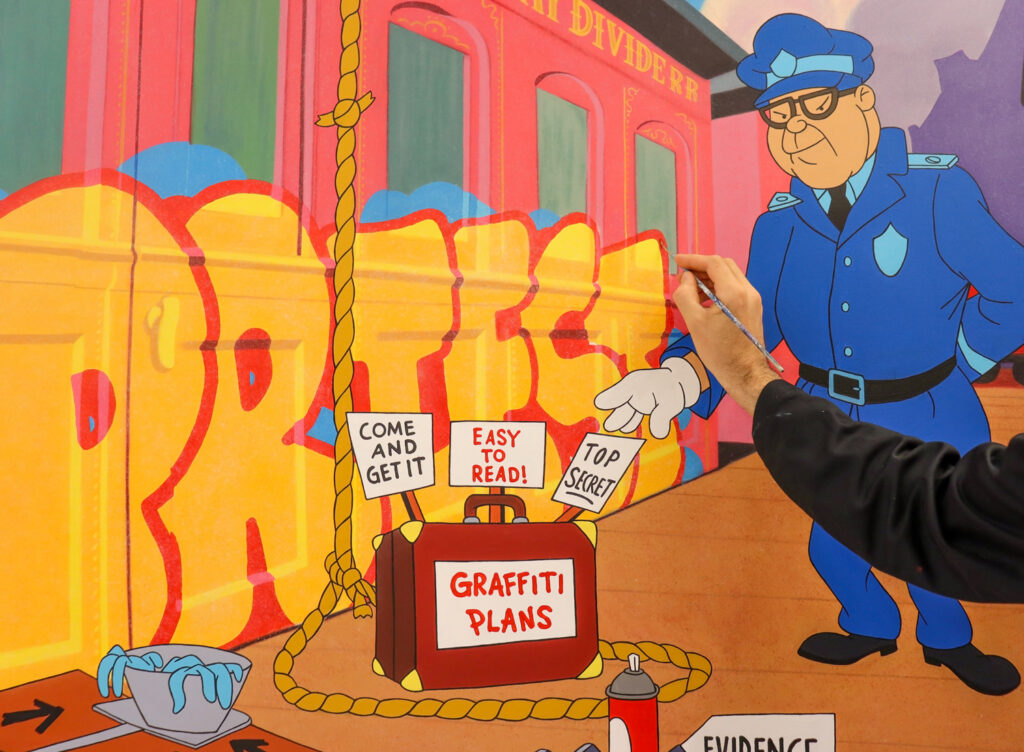
Image courtesy of the artist
To conclude, in your words, what essence does art hold for you?
PRIEST: I hope to one day understand why it’s so important to me, but for now, I need to make this large painting quickly so that I can get the next painting finished by Friday so that I can make that sculpture I wanted to make over the weekend which will leave me time on Monday to start that new project leaving enough time in the evening to design that installation. Once that’s all finished, I will think about why I did all of it.
©2023 PRIEST


